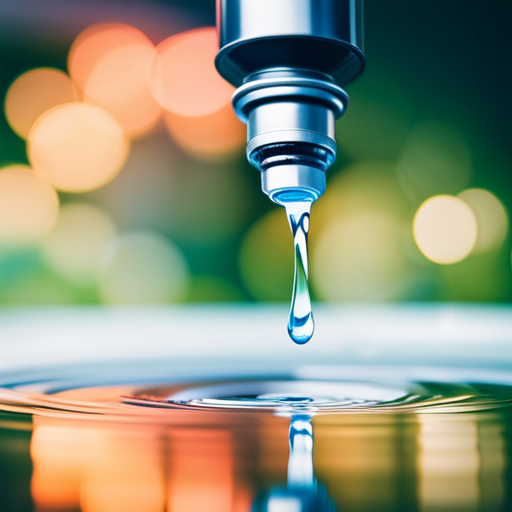Are you concerned about the potential health risks associated with glyphosate in your drinking water? If so, reverse osmosis (RO) may be the solution you’ve been looking for.
This popular treatment method can remove up to 99% of glyphosate from your water, providing you with peace of mind and a clear conscience.
But how does RO actually work? Essentially, it filters water through a semi-permeable membrane, which traps and removes impurities, including glyphosate.
However, it’s important to note that proper installation and maintenance are crucial to achieving optimal results.
In this article, we will explore the effectiveness of RO in removing glyphosate, the costs associated with installing and maintaining an RO system, and other important factors to consider when choosing the right RO system for your home.
So sit back, relax, and let us guide you in your quest for clean, safe drinking water.
Key Takeaways
– Reverse osmosis (RO) can remove up to 99% of glyphosate from drinking water.
– RO filters have three types of filters: sediment, activated carbon, and reverse osmosis membrane, all of which remove some amount of glyphosate.
– Properly designed and operated RO systems can remove glyphosate, as well as lead, mercury, and chlorine from water.
– Whole-house RO systems may require plumbing modifications and have installation and maintenance costs that depend on home plumbing and system size.
Glyphosate and Health
You may be concerned about the potential health risks associated with glyphosate, a herbicide found in Roundup weedkiller. The International Agency for Research on Cancer (IARC) has classified glyphosate as ‘probably carcinogenic,’ while the US Environmental Protection Agency (EPA) states that there are no risks of concern to human health from current uses of glyphosate.
Regardless of the conflicting opinions, it’s important to consider the glyphosate impact on your health and seek alternative solutions. One solution may be to install a reverse osmosis (RO) system, which can remove up to 99% of glyphosate from your drinking water. RO systems use a semipermeable membrane to filter impurities from water, including glyphosate.
While this solution may require some initial investment, it can provide peace of mind and ensure that you and your family are drinking clean, safe water.
RO Filtration Process
The RO filtration process involves three types of filters that work together to remove impurities from your drinking water. The first filter, the sediment filter, removes larger particles like sand and dirt.
The second filter, the activated carbon filter, removes smaller particles like chlorine and pesticides, and reduces odors and flavors. Finally, the RO membrane acts as the main filter, removing dissolved solids and other water impurities, including up to 99% of glyphosate.
The RO membrane is a semipermeable membrane that only allows water molecules to pass through, leaving behind contaminants. The pressure from the water supply pushes the water through the RO membrane, and the purified water is collected in a storage tank for use.
However, it’s important to note that the efficiency of the RO system in removing glyphosate may decrease if one of the filters stops working properly or if the RO membrane becomes fouled with time. Therefore, it’s crucial to follow regular maintenance and replacement schedules to ensure the system is working effectively.
Considerations and Costs
When considering installing an RO filtration system, it’s important to factor in the costs of installation and regular maintenance, as well as the size and type of system needed for your home’s water usage.
The installation expenses for an under-sink RO system can range from $150 to $500, while a whole-house system can cost upwards of $5,000.
Additionally, maintenance requirements should be considered, as the particle and carbon filters must be replaced every 3 to 6 months, and the RO membrane can become fouled with time. These maintenance costs can add up over time and should be factored into the overall cost of the system.
The size and type of system needed for your home’s water usage will also affect the cost. Whole-house RO systems are more expensive than under-sink units, and the size needed depends on water usage and home size.
It’s important to consider the upfront costs of installation and the ongoing maintenance requirements when deciding on the type of system to install. Additionally, it’s recommended to choose an NSF-certified RO system to ensure that it meets strict quality and safety standards.
Conclusion
Congratulations! You’re now well-informed on the potential health risks of glyphosate in drinking water and the benefits of using a reverse osmosis (RO) system to remove it.
By understanding the RO filtration process and the importance of proper installation and maintenance, you can ensure that your water is safe and free of harmful contaminants.
Remember to choose an RO system that’s NSF certified and consider the costs associated with installation and maintenance. Investing in a quality RO system is a small price to pay for the peace of mind that comes with knowing you and your family are drinking clean, safe water.
So go ahead, take the leap and enjoy the benefits of clean water and a clear mind!
